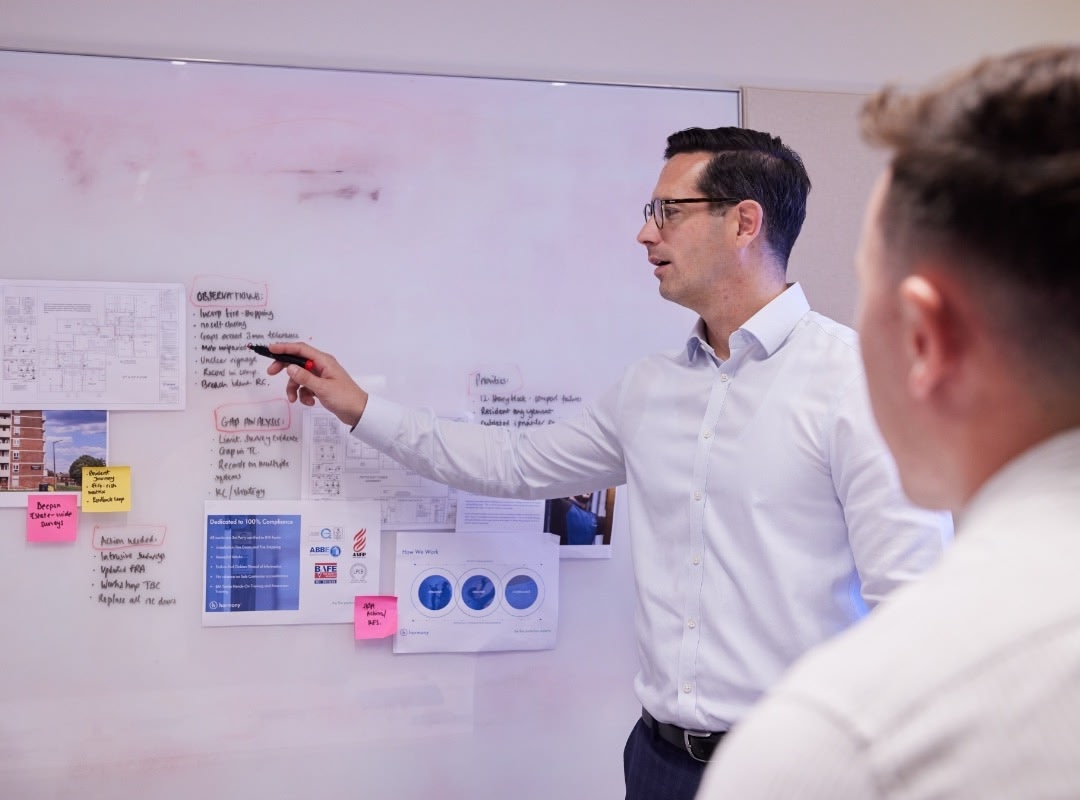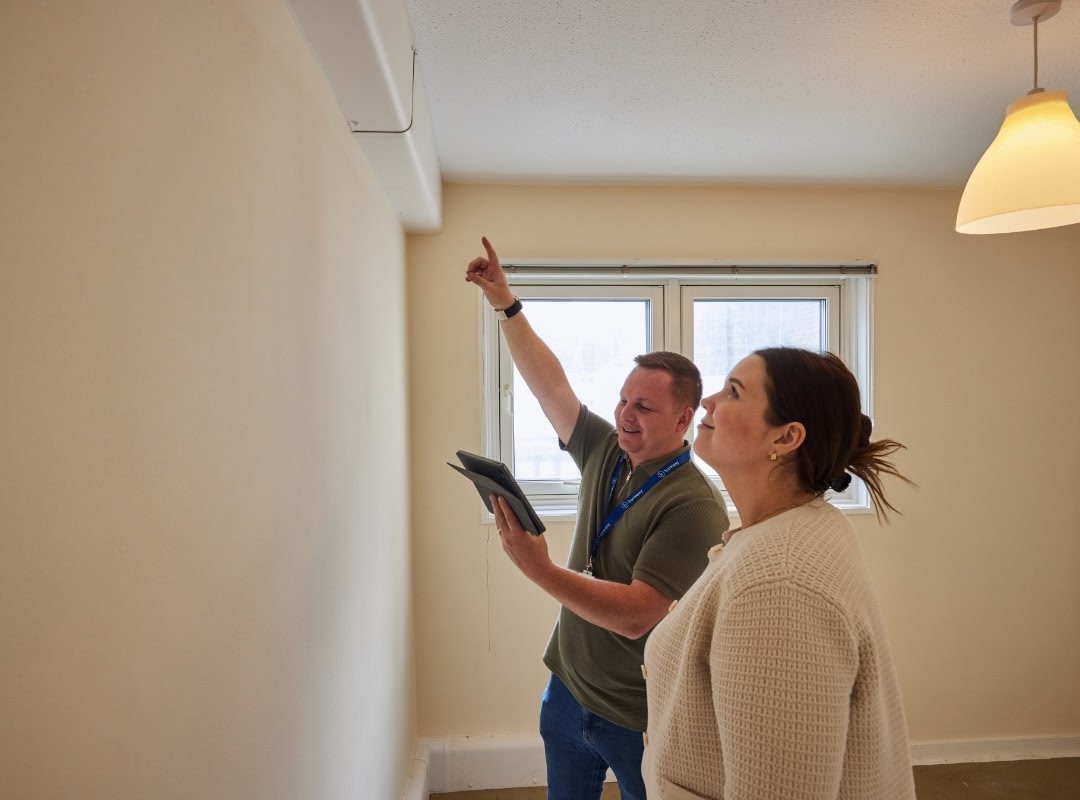
Before formally engaging, we offer a complimentary initial insight stage. This allows us to quickly spot early signs of risk, gaps, and priorities across your stock, while aligning these observations with your wider organisational goals and safety outcomes. From there, we outline potential intervention options and the likely scale of need, setting the groundwork for a structured, evidence-based discovery phase — including indicative cost, scope, and timescales for Phase 2.
At this stage, we carry out a focused audit to understand where risks may exist by surveying a representative sample of properties. This discovery phase forms the basis for a well-informed approach to risk reduction and compliance. We work closely with key stakeholders to understand organisational context, goals, and challenges, ensuring that our recommendations align with broader priorities. The process results in a detailed gap analysis, highlighting areas of risk, non-compliance, and potential improvement. Alongside this, we review existing safety policies, procedures, and historical investment to assess how effectively resources have been used to date. The outcome is clear, evidence-led insight to support smarter decision-making and help direct resources where they will have the most impact.


In the development stage, we move from insight to action by expanding on earlier findings to clearly show where risks lie, how effectively they are managed, and where gaps remain. Using this understanding, we create a structured, forward-looking investment plan that prioritises action, sets costed pathways, and defines practical timelines to reduce unacceptable levels of risk across your portfolio. We refine risk ratings, set strategic priorities, and provide a draft fire safety policy aligned with legislation, best practice, and resident needs. Alongside this, we outline intervention strategies, budget requirements, delivery and procurement options, and supporting measures such as SLAs, resident engagement approaches, social value commitments, and Gateway approval protocols. The result is a clear, proportionate roadmap that delivers compliance, value for money, and long-term resilience.
The delivery stage bridges strategy and implementation by translating fire safety plans into fully compliant, buildable solutions and then overseeing their safe and consistent execution. This begins with developing detailed technical designs (RIBA Stages 3–4), embedding fire policy into specifications, and preparing all documentation required for Building Safety Regulator and building control approvals. We provide full support with retrospective fire strategies, compartmentation and asbestos surveys, escape route and smoke control assessments, CFD modelling, and the compliance review of assets such as fire doors, detection systems, and risers. As delivery progresses into construction (RIBA Stages 5–6), we ensure design integrity, regulatory alignment, and policy consistency across contractors and consultants, underpinned by cost management and design optimisation. A robust Golden Thread system is implemented to maintain accurate records throughout construction and into occupation, while resident and team engagement is actively managed through targeted communications and ongoing liaison with key stakeholders, ensuring safety, transparency, and accountability at every step.


Our retained services phase offers ongoing support to help clients stay compliant, adapt to change, and continually improve in an evolving regulatory and risk environment. Through flexible, fractional fire engineering input, we provide expert support as needed—from risk assessments and fire door inspections to M&E compliance checks and emergency engineering reviews. We conduct regular reviews of safety management systems, monitor emerging risks, and track new legislation, technologies, and innovations. This is reinforced with stakeholder workshops, training, and guidance on code compliance and deviation strategies. We also support funding optimisation to secure resources for continual improvements, ensuring fire safety remains resilient, cost-effective, and future-ready.